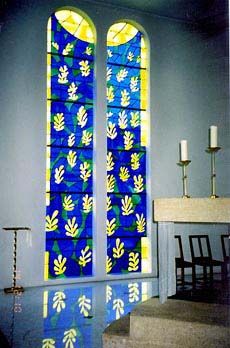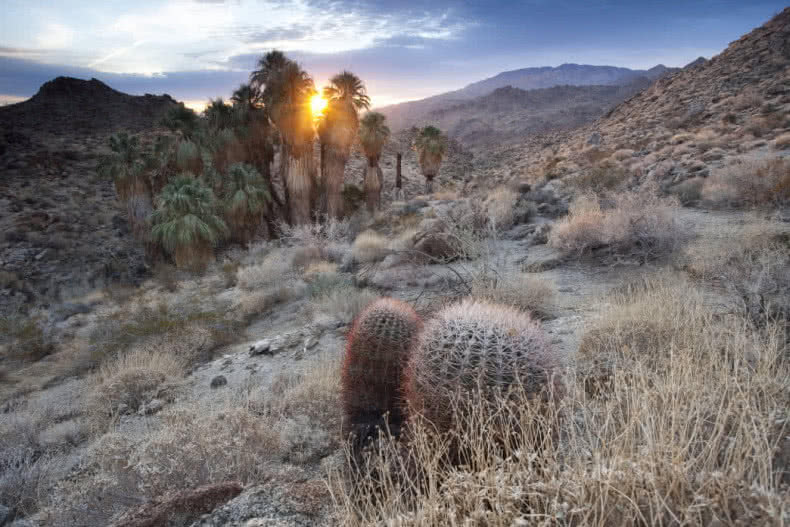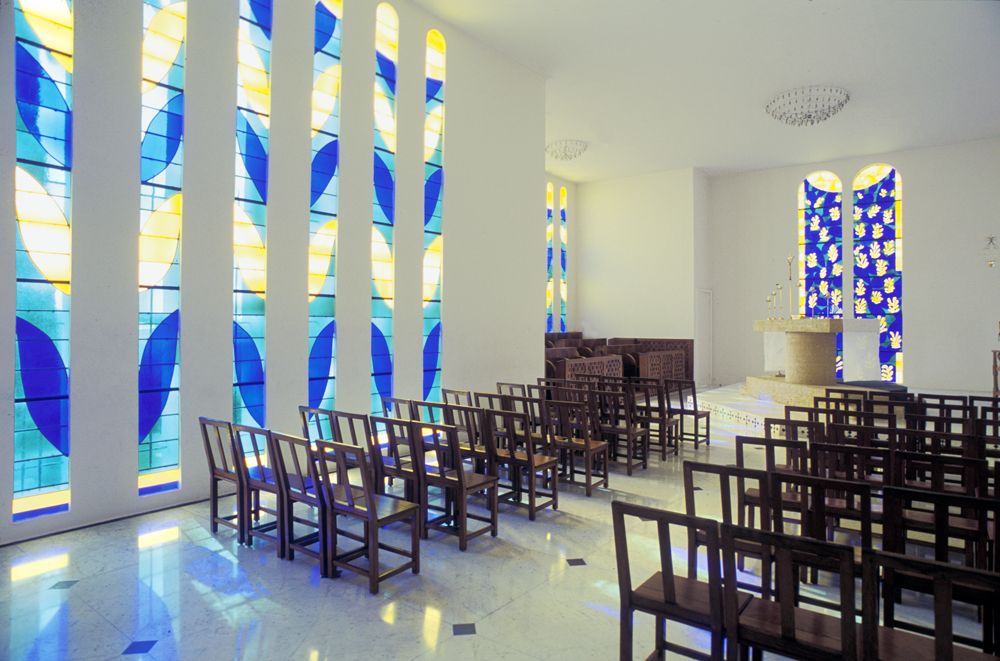It’s a commonplace that religious experience is deeply private. Not because we are separate individuals, but because inner phenomena, by their very nature, are not social phenomena.
When someone does disclose his or her religious experience however, while denying that it is such, something is amiss.

The art critic for the Washington Post found himself overcome on a family vacation in Europe, specifically at the Matisse Chapel in Vence France, with its “Tree of Life” windows.
Sebastian Smee begins by saying:
“Weeks have elapsed, and I’m still trying to figure out what happened when I visited the Matisse Chapel in Vence, France — why I responded as I did. Mystified, I keep coming back to the obvious: I wasn’t prepared.”
He apparently means what happened to him doesn’t fit neatly into one of the boxes of his previous experiences, or anything that he can readily explain.
“It was not religious insight, or a feeling of oneness with all humankind. It was just pure, uncontained emotion.” I question that disclaimer.
After entering Matisse Chapel, Sebastian reports, “I was overwhelmed by waves of liquid, colored light. Yellow, blue and green. Those words make them
sound distinct, but they were one pulsing phenomenon, indivisible. My eyes were absolutely awash in color. The intensity was astounding.”
“I’m an art critic. I see a lot of art and, yes, my responses are often emotional. I get excited, I’m moved, I’m amazed. But I am seldom ever undone.”
It’s being undone that bothered him at the time, and in the weeks since the experience. “I was just . . . overwhelmed. All of me. Me, with all my history.”
Smee was with his family, yet feels embarrassed at being undone by the beauty and simplicity of the chapel. “I felt sure I was about to sob, heavily — that I would fail to control myself… I moved quickly away from the others, avoiding eye contact.”
By “the others,” he means his kids, especially his son. But they see, as children always do, that something is up with a parent.
So why dampen it and try to hide it? Wouldn’t it have been a tremendous gift to let his son and daughter see that their father was emotionally overwhelmed by “the waves of liquid, colored light” in the chapel?
Sebastian reaches for explanations, “Stendhal,” he says, “the great French novelist, famously defined beauty as ‘nothing other than the promise of happiness.’” That too doesn’t cut it.
Being a post-modern, he pays obeisance to psychology, then admits the attempt to contain the experience in some psychological category is futile, and beside the point.
Sebastian ends the piece well by saying, “It was the strongest dose of beauty I’ve experienced in a very long time…and I couldn’t be more grateful.”
By cloaking the clearly religious experience unnecessarily in mystery however, and even denying that it was a religious experience, Smee ends up hindering the reader in his or her path of experiencing of beauty, which is inherently a religious experience.
He doesn’t honor the experience, his readers or his children by saying, “I feel no urge to label the experience, or otherwise explain it, whether in religious, medical or art historical terms.”
It’s not about “labeling.” It’s about conveying such experiences in such a way that discerning readers, during these hellish times, understand that religious experiencing is not a particular, personal thing, but a universal capacity of the human being.
For an art critic to deny he has had a religious experience in a chapel designed by Matisse would be risible if it wasn’t so heartrending. Even so, beauty that’s recreated by even the greatest artists cannot approach directly experiencing the beauty of untrammeled nature.

Many years ago, after hiking all day with a half-dozen young men like myself in the remote high desert wilderness of southern California, we came to a wide and fast-flowing stream. At that time you could still drink straight from mountain waterways, and I was passing cupfuls of water to my companions.
Suddenly I was so overwhelmed the cumulative beauty of the day that I become frozen, literally unable to move. I learned later the Greeks called it “aesthetic stasis.”
Immobilized, I sensed a river of sorrow coming toward me, flowing just above the line of the stream. When it hit I began to sob uncontrollably—in front of a group of guys I barely knew!
I ran down the bank and watched my feet shake for 15 minutes as if they were someone else’s feet. There was no personal grief or sorrow in it. It was, as I came to understand, the collective sorrow of man.
One of the fellows kindly brought down some orange slices, which made me laugh. The slices looked as brilliant and tasted as good as anything I’ve ever eaten. I realized there was nothing to be ashamed of.
Martin LeFevre

